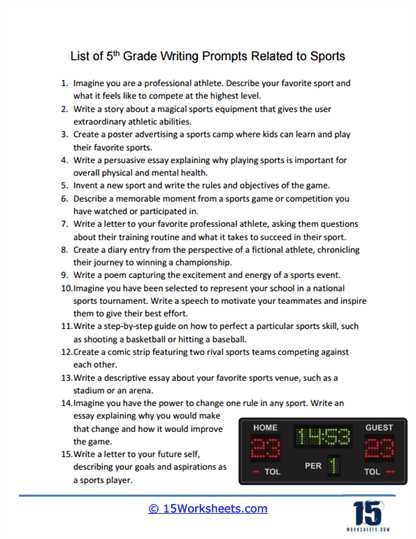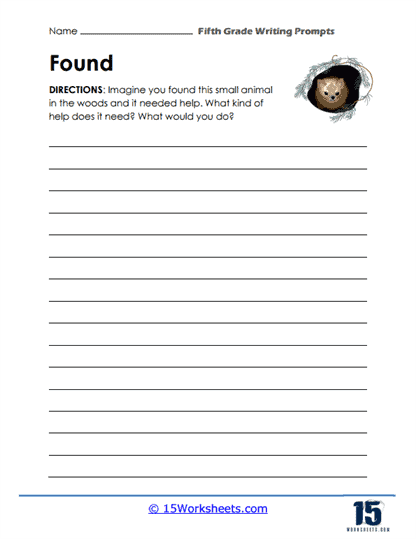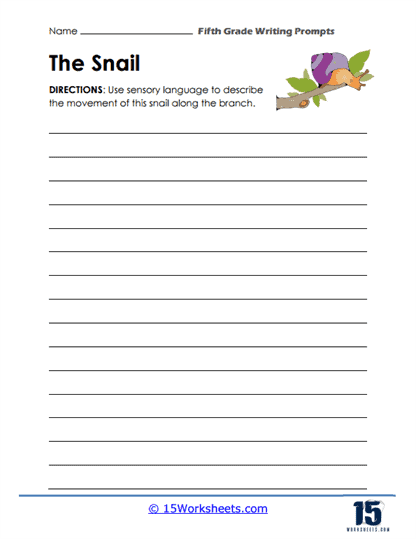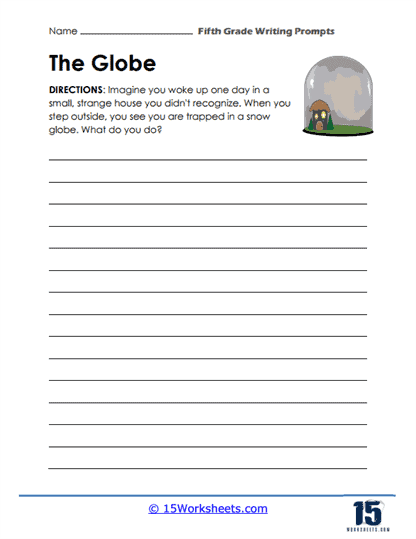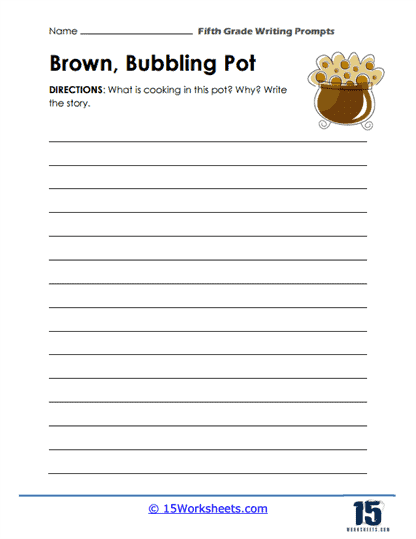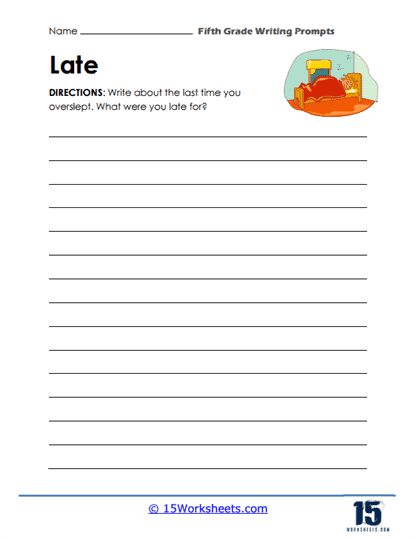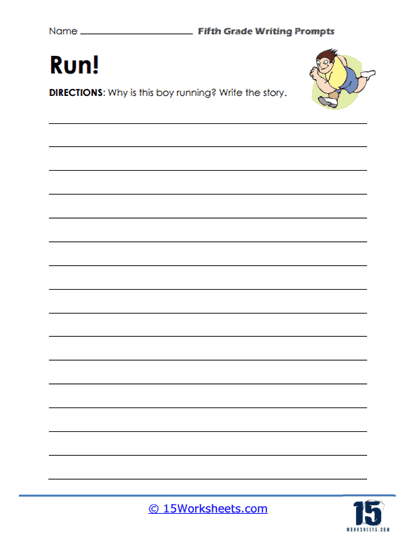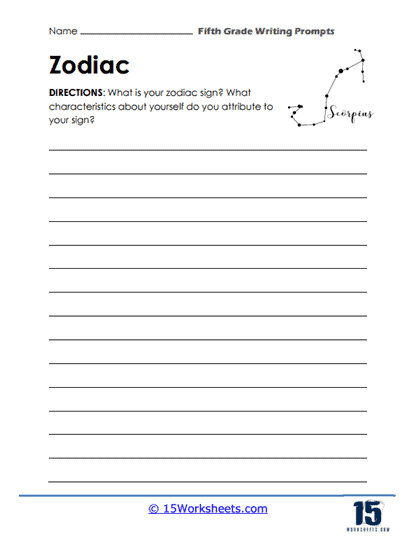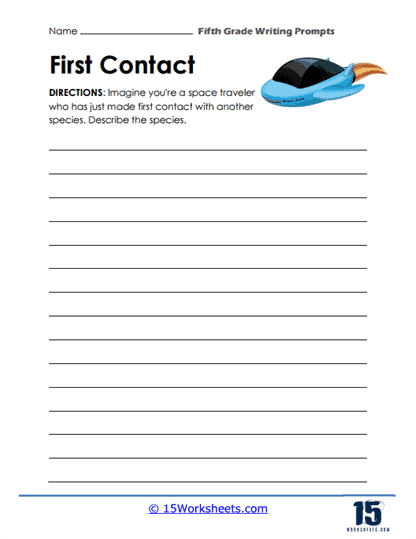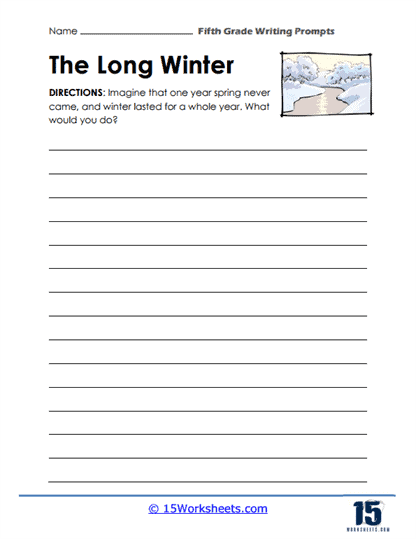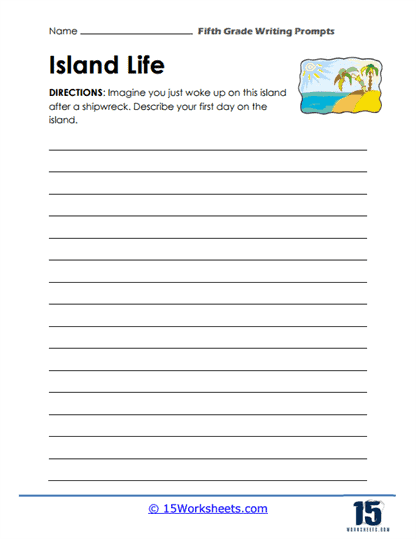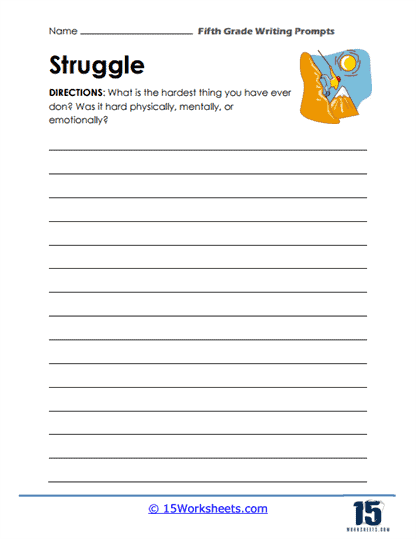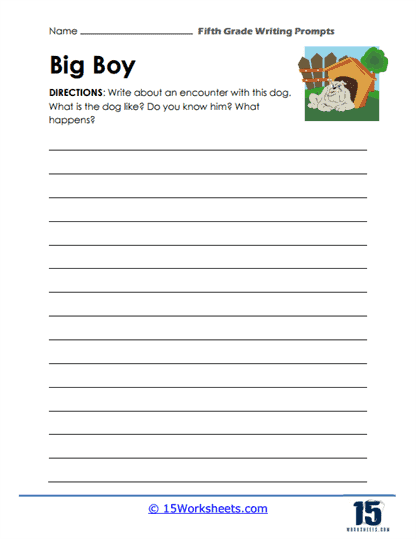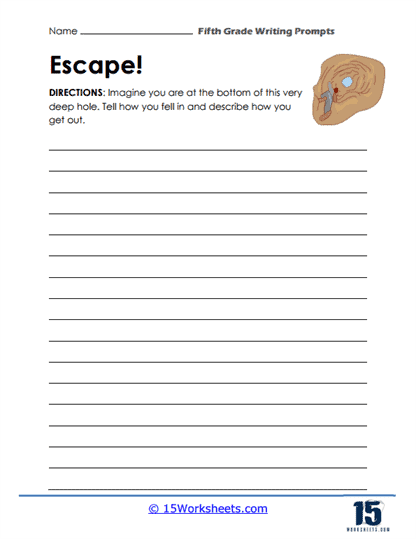5th Grade Worksheets
All About These 15 Worksheets
The printable resources are used to stimulate and guide the writing process for 5th grade students. They include a series of prompts or questions designed to encourage students to write about a variety of topics, helping them to develop their writing skills and creative thinking.
Each prompt on a worksheet might ask the student to write about something specific. For example, a prompt might ask the student to write a short story about a specific event, describe a particular experience, or construct an argument about a given topic. They span various genres including narrative, persuasive, expository, and creative writing. They can cover a range of subjects, such as personal experiences, historical events, science, social studies, or purely imaginative scenarios.
The primary aim of these worksheets is to encourage students to think critically, use their imaginations, build coherent arguments, and improve their grammar, punctuation, and vocabulary skills. They can also help students prepare for standardized tests, which often require written responses to specific prompts.
This is the basic approach you should have to approaching a writing prompt:
Understand and Brainstorm
The first thing you need to do is read the writing prompt carefully. Make sure you understand what it’s asking you to do. If it’s a story, what should the story be about? If it’s a persuasive essay, what are you supposed to convince people of? It’s okay to ask your teacher if you’re not sure what the prompt is asking. Once you understand the prompt, think about different ideas you could write about. For example, if the prompt asks you to write a story about a brave act, think about different situations where someone could be brave.
Make a Plan
Once you have your ideas, make a plan for your writing. This is often called an “outline.” You can write down what you want to say in the beginning, middle, and end of your story or essay. This will help you keep your writing organized. Next, start writing your story or essay based on your plan. Don’t worry about making it perfect the first time – this is just a “first draft”. The important thing is to get your ideas down on paper.
Proofread and Revise
Once you’ve written your first draft, it’s time to make it better. This is called “revising”. You can add more details, fix mistakes, or change parts of your story or essay to make it clearer or more interesting. The last step is to check your work for small mistakes in spelling, punctuation, and grammar. This is called “proofreading”. It can be helpful to read your work out loud, because sometimes your ears can catch mistakes that your eyes miss! After proofreading, make the necessary corrections and you’ll have your final piece. It’s now ready to hand in to your teacher.



